I’m finally getting around to writing my U-Trak review, and there is a lot to report! Let me start by saying that the U-Trak works great, just like you would expect a USB trackball to work. You plug it in, windows detects it, and you’re gaming in a matter of minutes. Oh, you want to mount it in a control panel and light it up? Well, that’s where things get interesting. But first, some basics.
Here is what it looks like out of the box, with the USB connector:
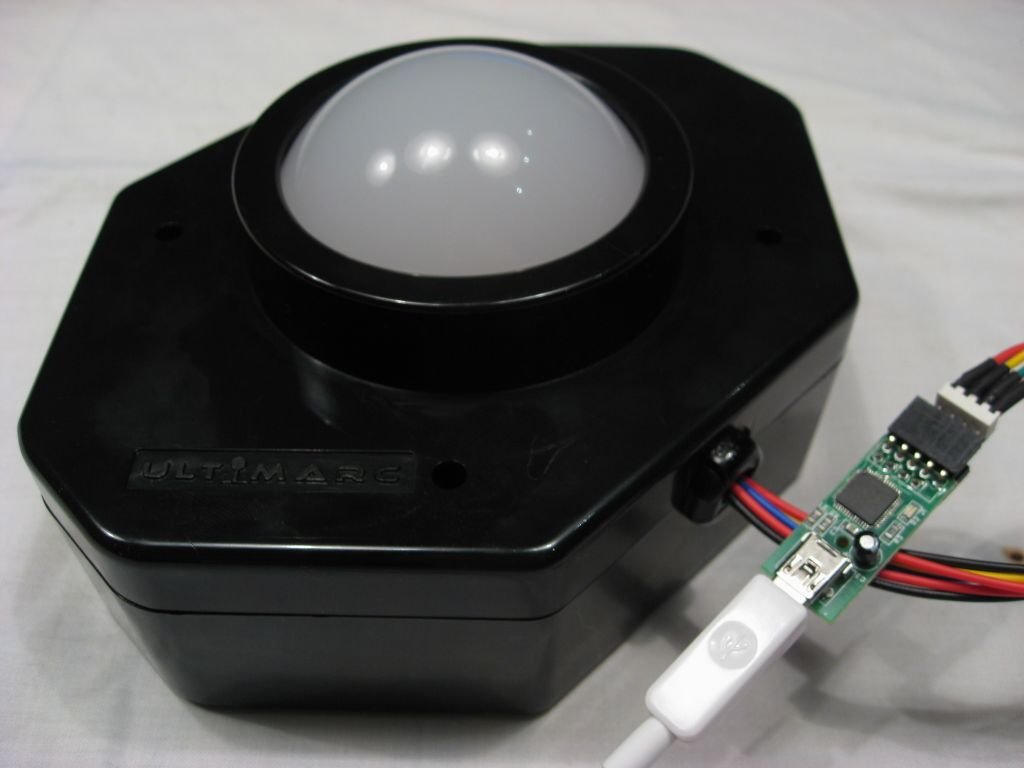
Now, you would think that hooking up the USB would be pretty straight forward, but there were some minor issues, and my one recurring issue with Ultimarc products are their lack of documentation to help avoid these little annoyances. There are some instructions on the web site, but they do not address everything you need to know about. The USB PCB has two sets of four pin female connectors on one end, like this:
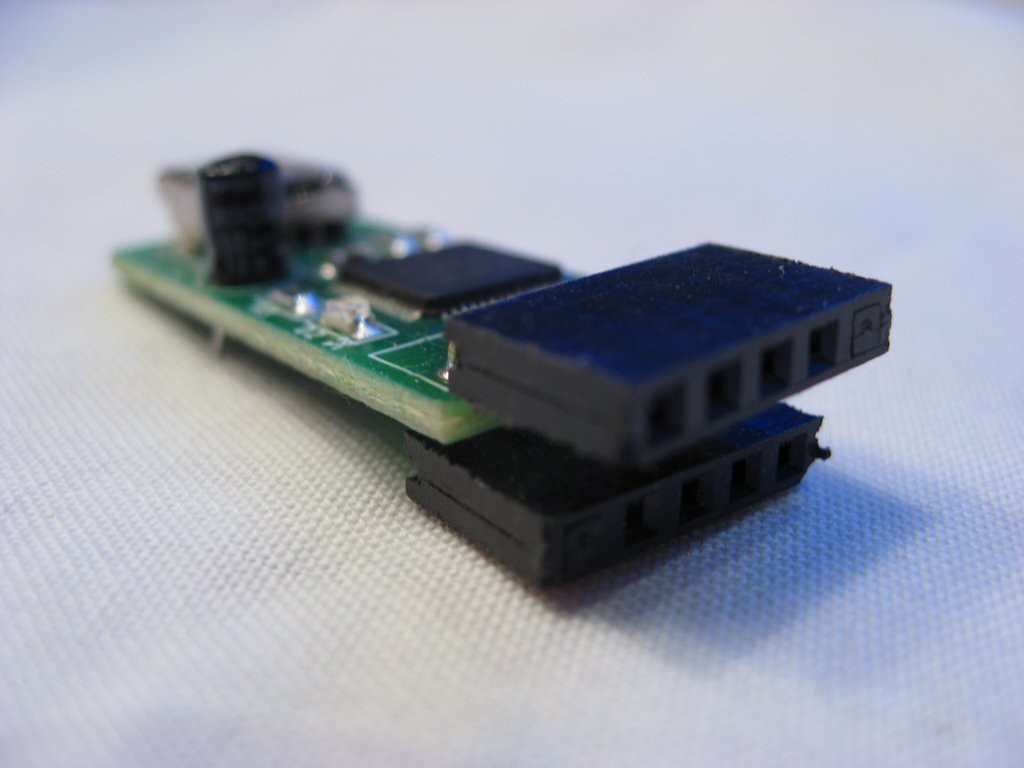
(Happily, this is the opposite of the SpinTrak PCB, so you can’t mix up the PCBs.)
And there are two separate 4-pin wire harnesses coming from the U-Trak. Do I need to hook both of these up? (Only one was hooked up out of the box.) And which one goes where? No instructions. The Ultimarc web site has this picture as the only help:

But I hooked it up that way, with the wire colors as indicated, and it didn’t work. To save you the trial and error I had to go through, I found that it worked if I hooked it up like this:
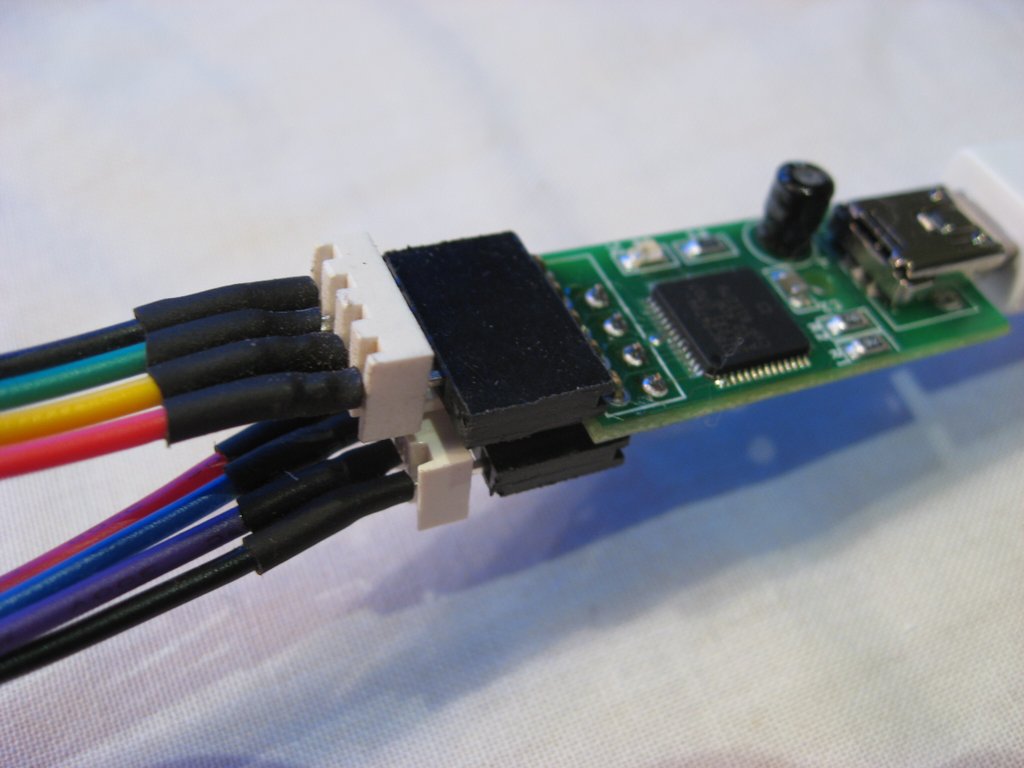
As I mentioned, the U-Trak is totally plug-and-play (once you get the harnesses plugged in correctly), and it worked great in Mame right away.
Physically, the U-Trak seems solid enough, and it’s nice that it is enclosed in its plastic box with nothing protruding. It’s got a clean design. Here is the inside:
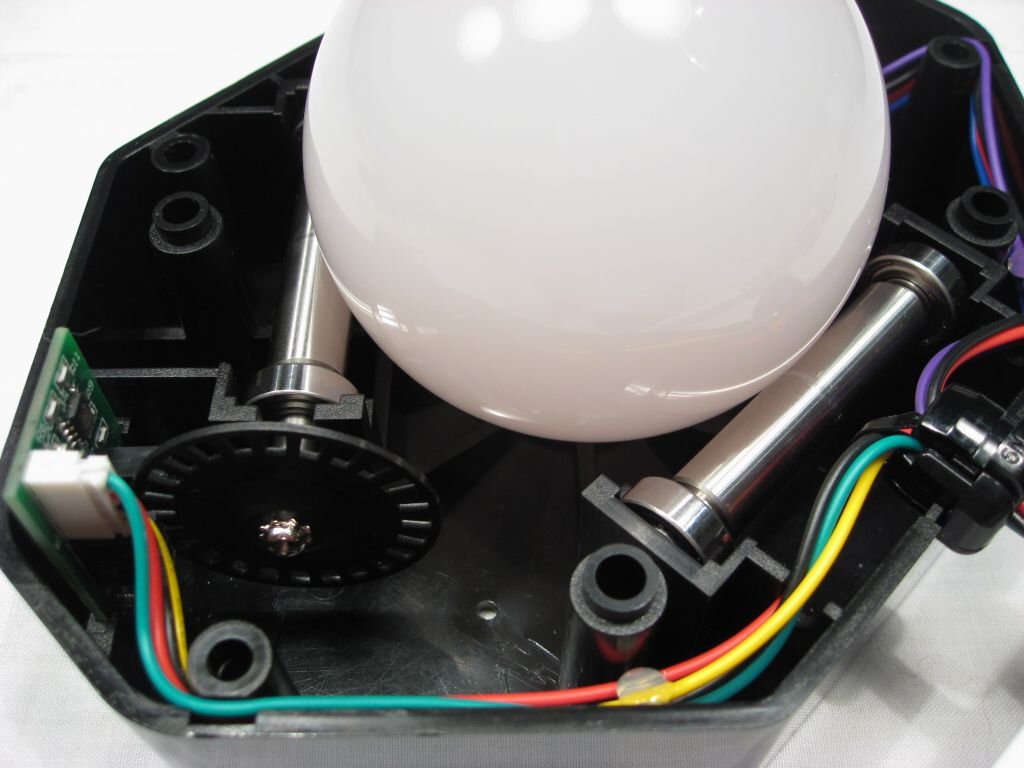
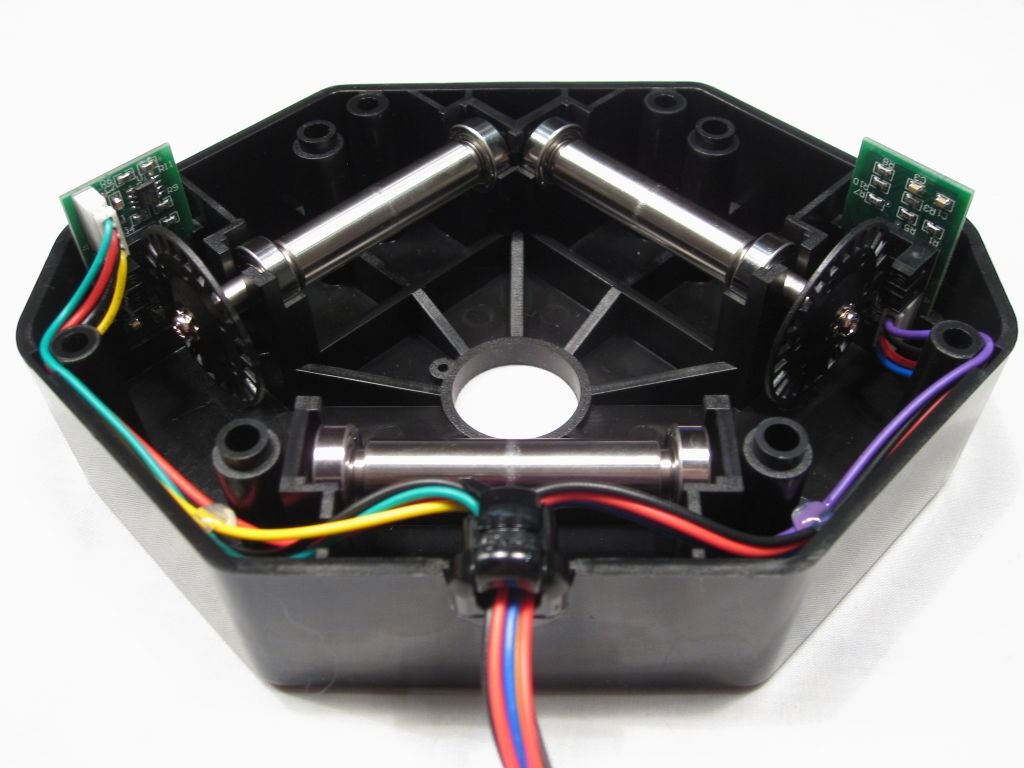
That hole in the bottom is where the lighting module goes. More on that later. Here is a video of the ball in action:
For my machine, I really wanted a blue ball, and was disappointed that Ultimarc didn’t offer one. So I bought the translucent blue from Happ at considerable cost ($35.35, for a ball?!?).
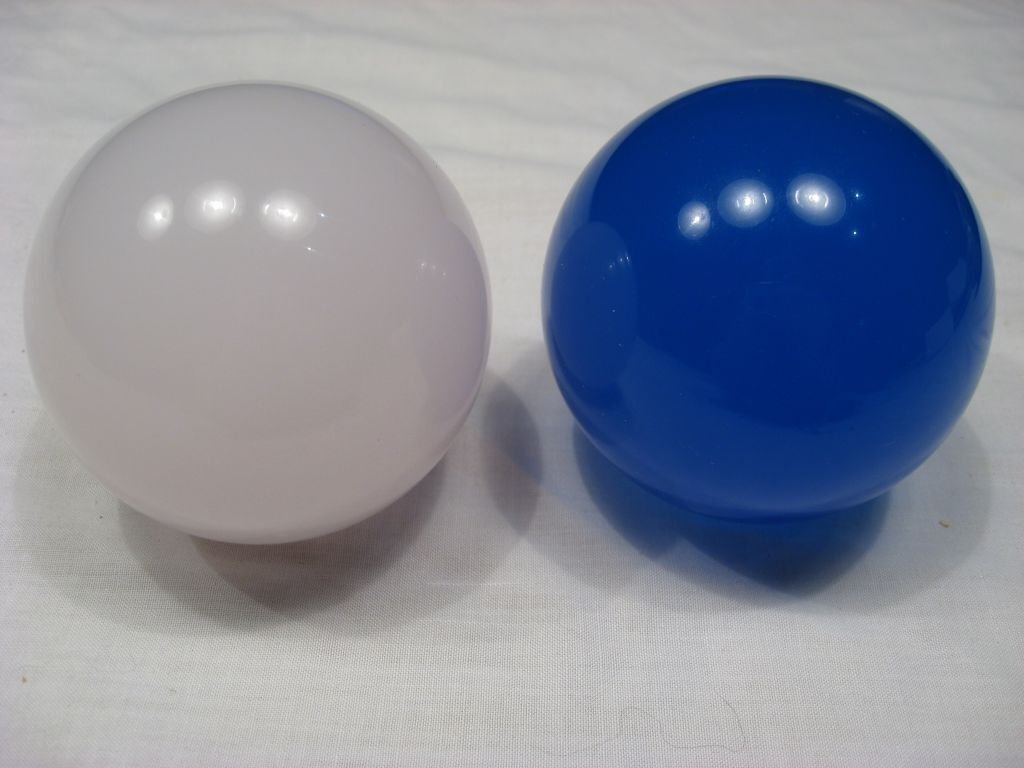
I must say, I’m really glad that I sprung for the blue ball. It is so much nicer than the white one!
Taking apart the U-Trak and replacing the ball is a simple matter of taking out four screws. Then you get this:
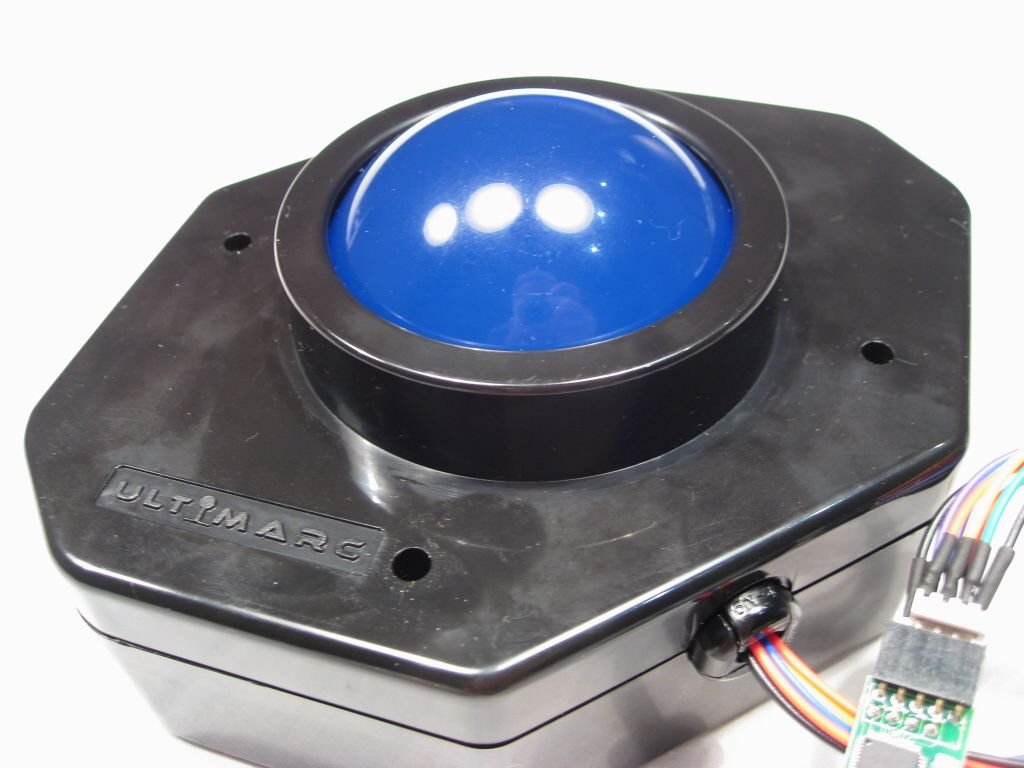
Of course, with a white ball you can get multiple colors with the lighting module, whereas the blue ball pretty much only lets the blue light through. On the other hand, the blue ball looks great just sitting there, while the white one pretty much has to be lit up to look good.
This is what the lighting module looks like (I powered the LEDs with an LEDWiz):
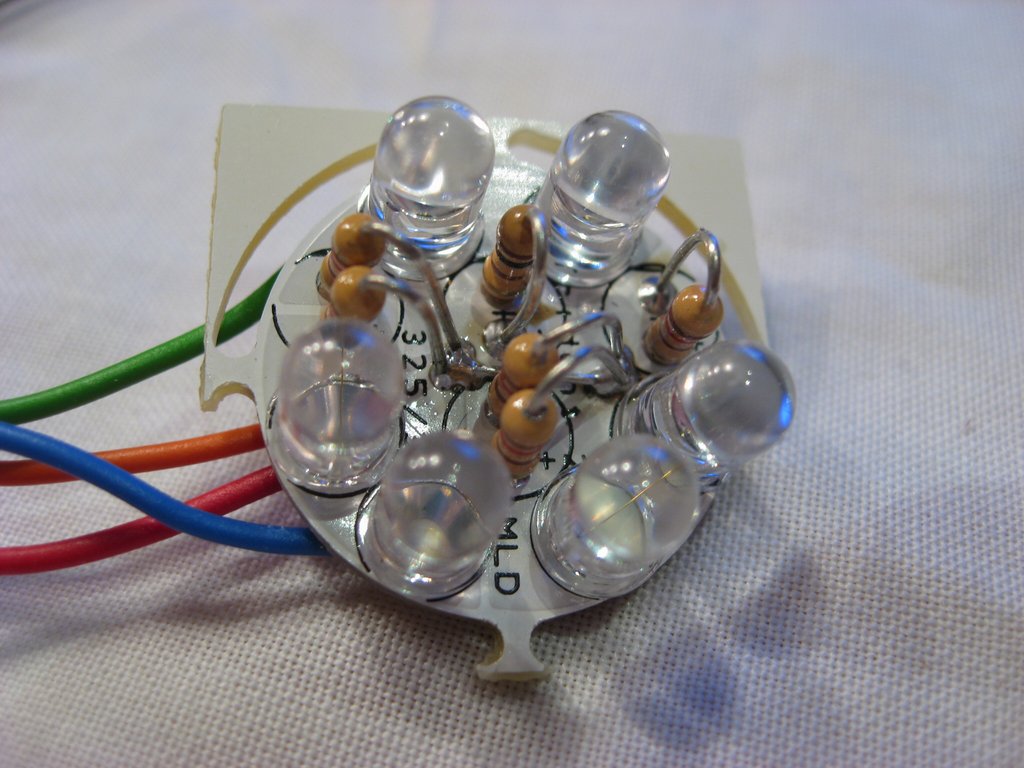

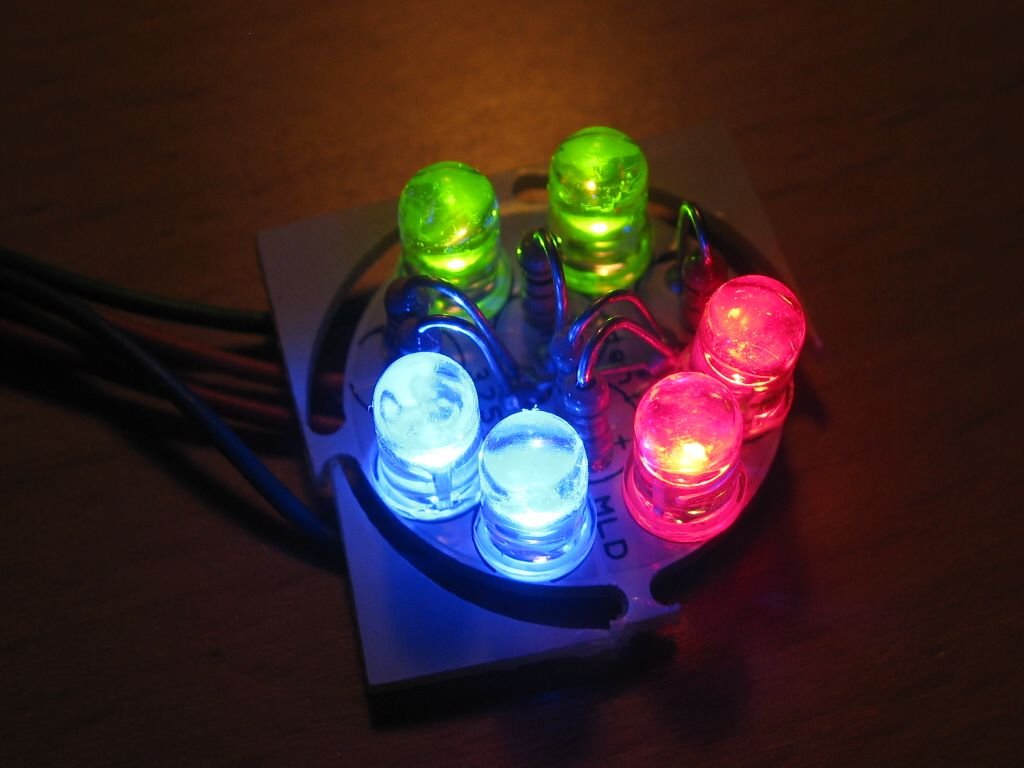
It goes in the hole in the back of the U-Trak like so:
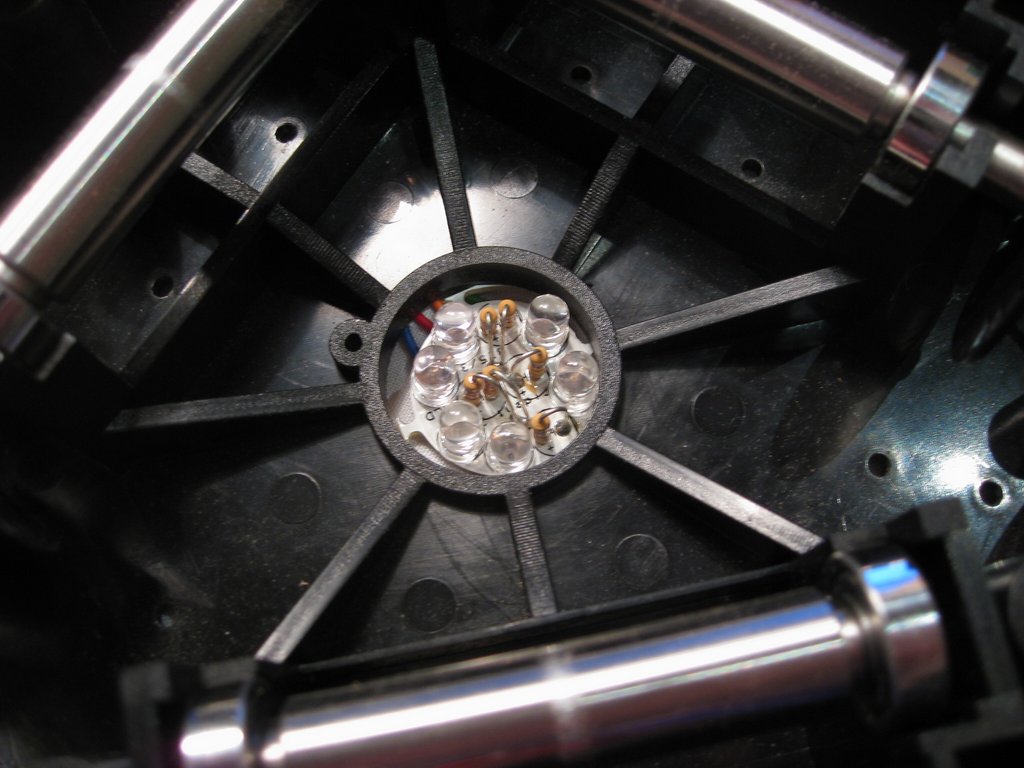
But wait, how the heck is this thing supposed to attach? There seems to be these little “wings” on the side of the PCB, but they are extremely fragile. One was broken off out of the box, and another broke off with minimal handling. Unfortunately, the one that was broken off out of the box had a hole in it through which I was supposed to put this little screw to fasten the PCB to the U-Trak:
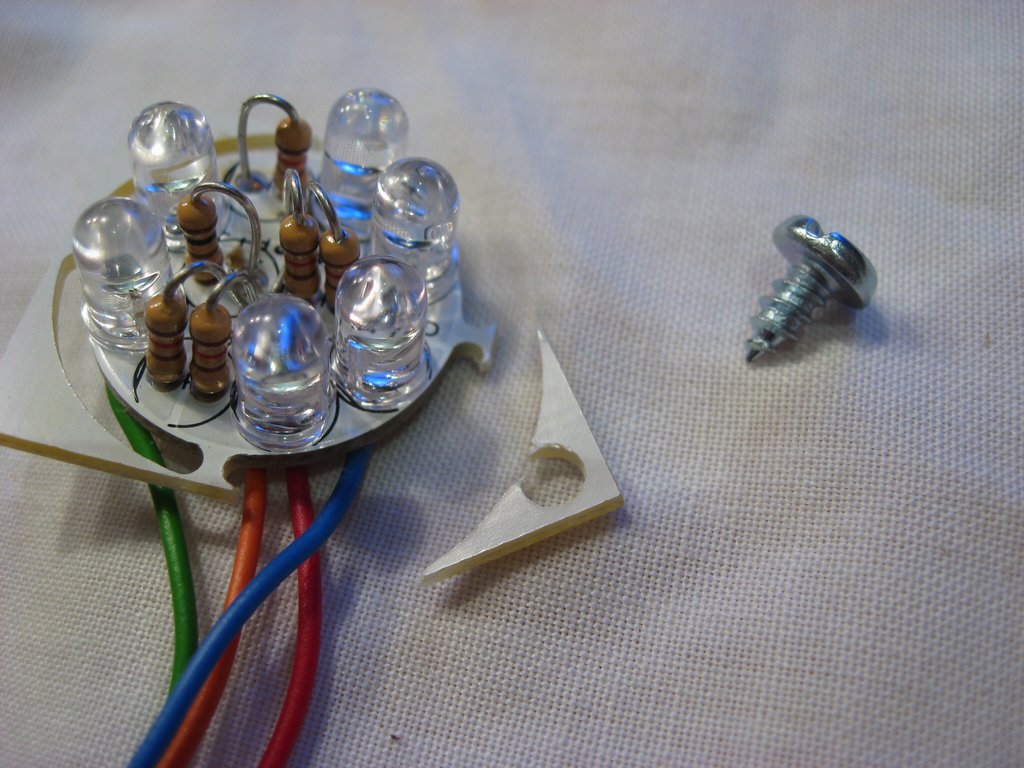
Hmmm, now what? That hole looks awfully lonely over there:
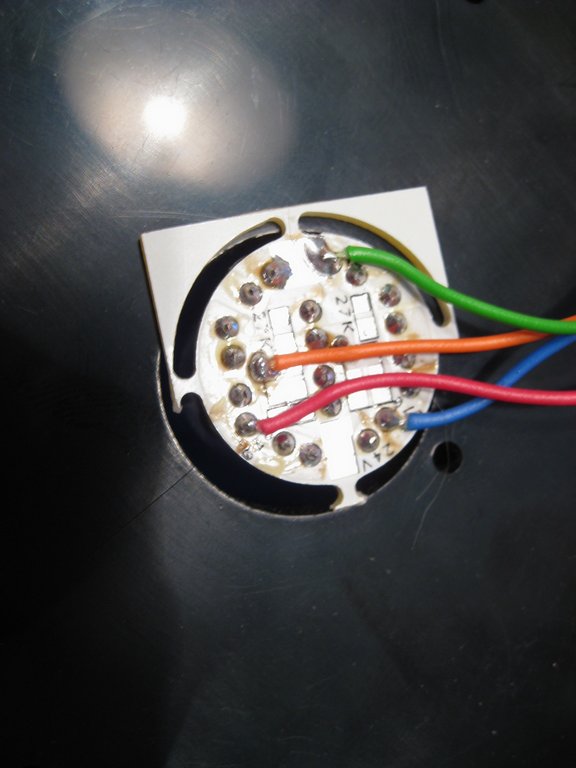
Oh well, I guess I’ll just have to fasten it with some hot glue. Conclusion: this mounting system needs to be redesigned!
Here is what the white ball looks like with the three different colors on, under fairly low light conditions:
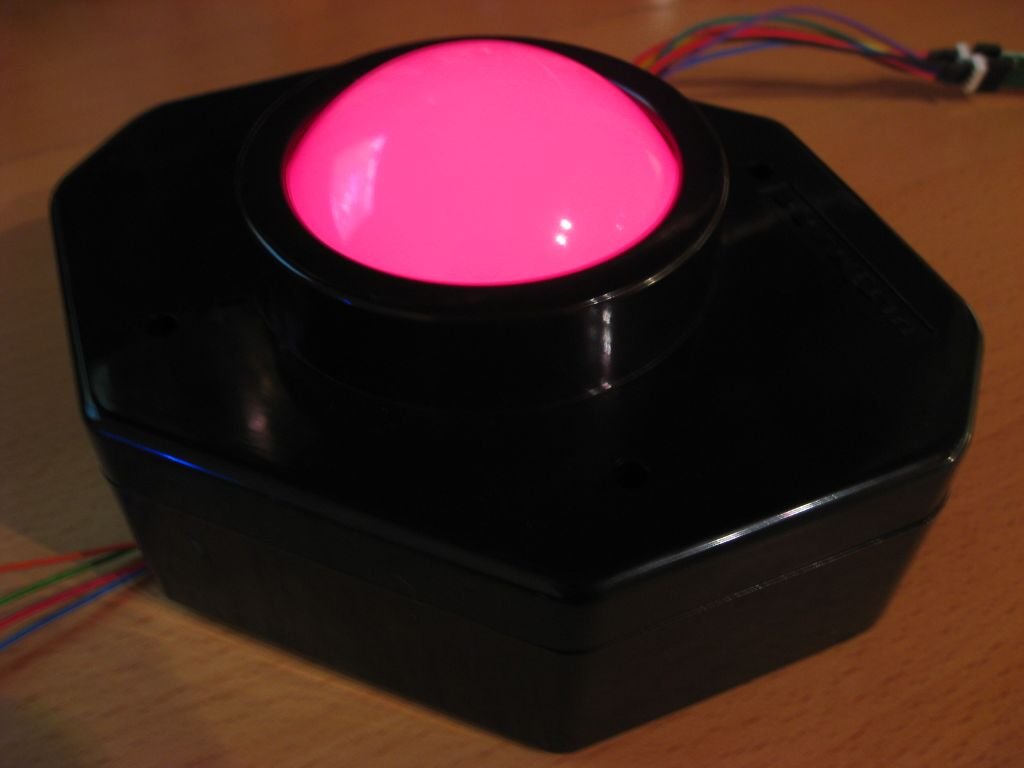
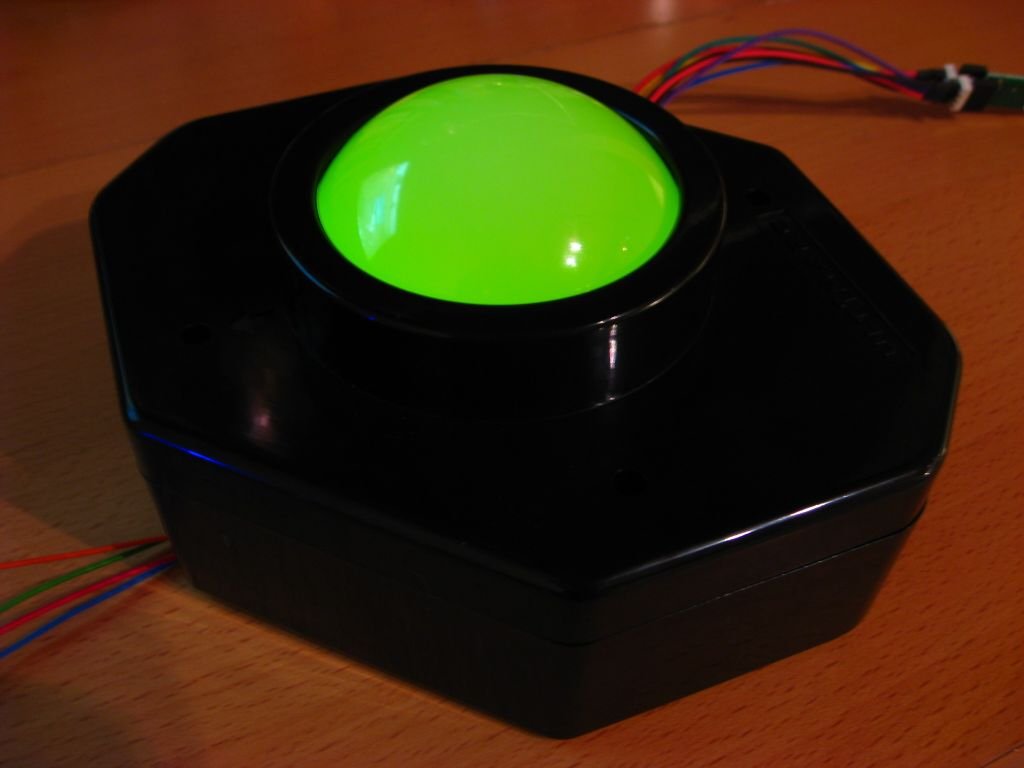
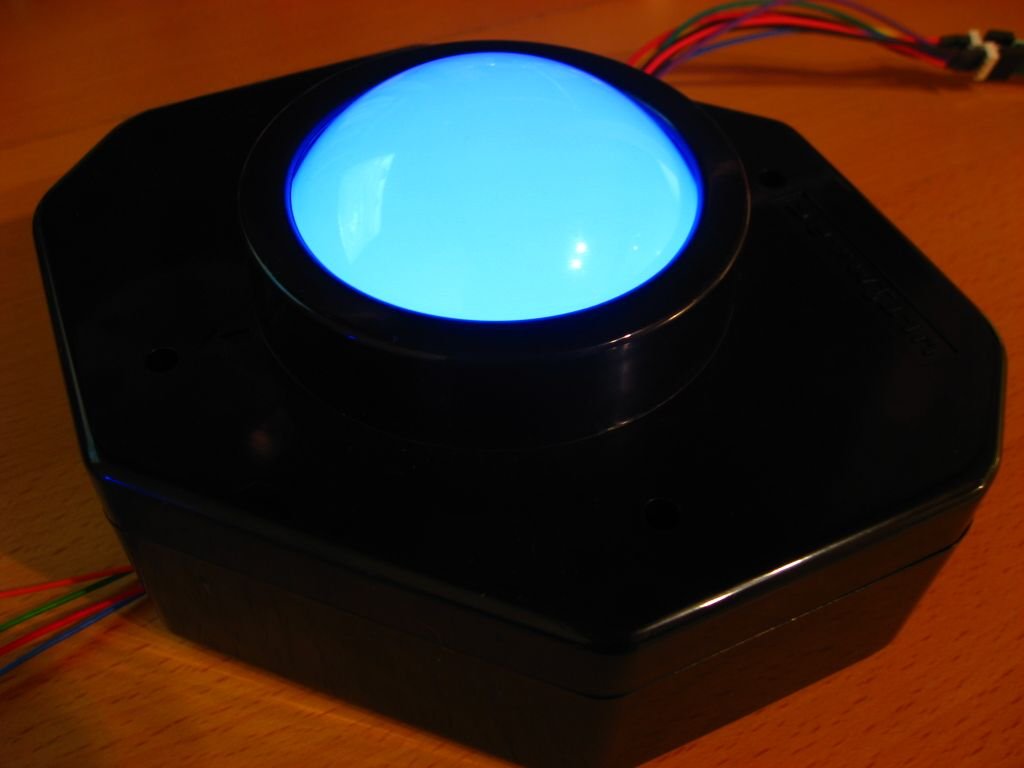
I seem to have lost my analogous picture of the blue ball lit up with the blue light, but I do have this picture of it lit up like that without the cover on:
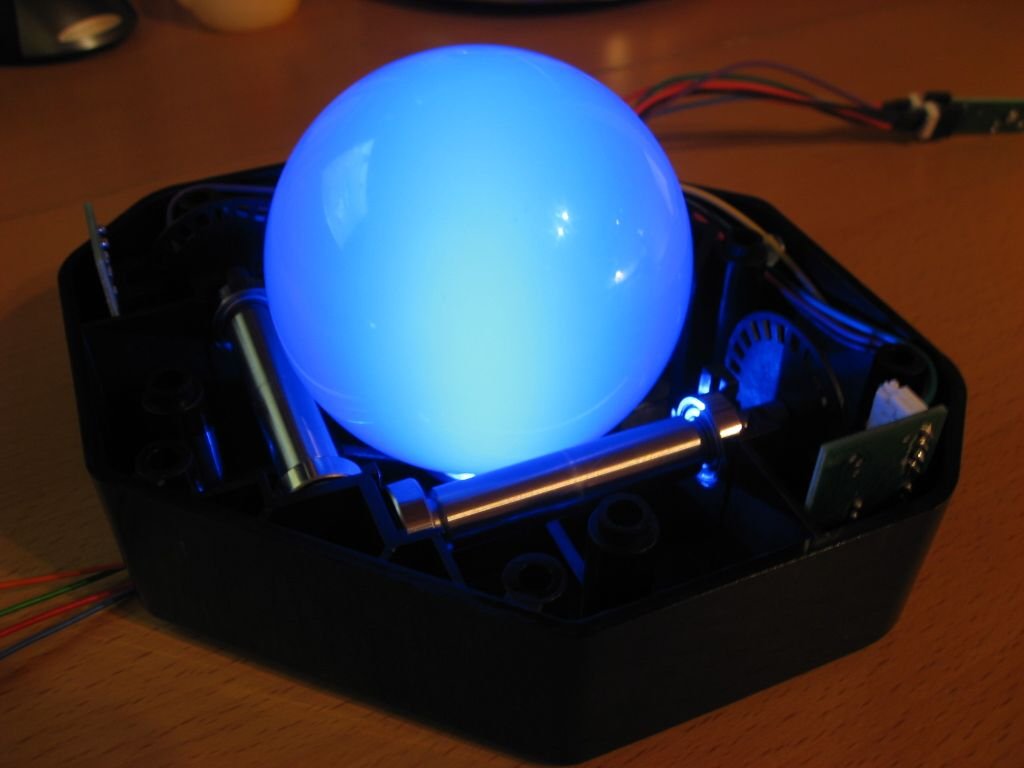
It is hard to tell from the picture, but the blue ball with the blue light gives a much deeper blue than the white ball with the blue light.
Now the place that the blue ball really outstrips the white ball is under bright lighting conditions. This is the white ball with the blue light under bright light:
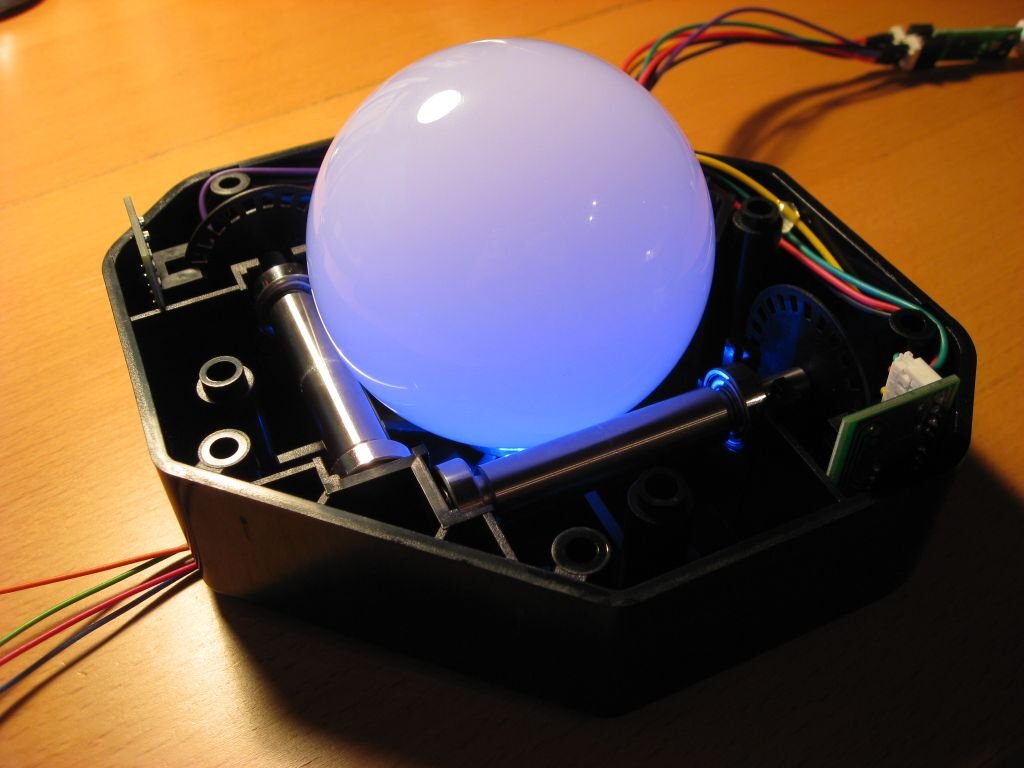
And this is the blue ball with the blue light under bright light:
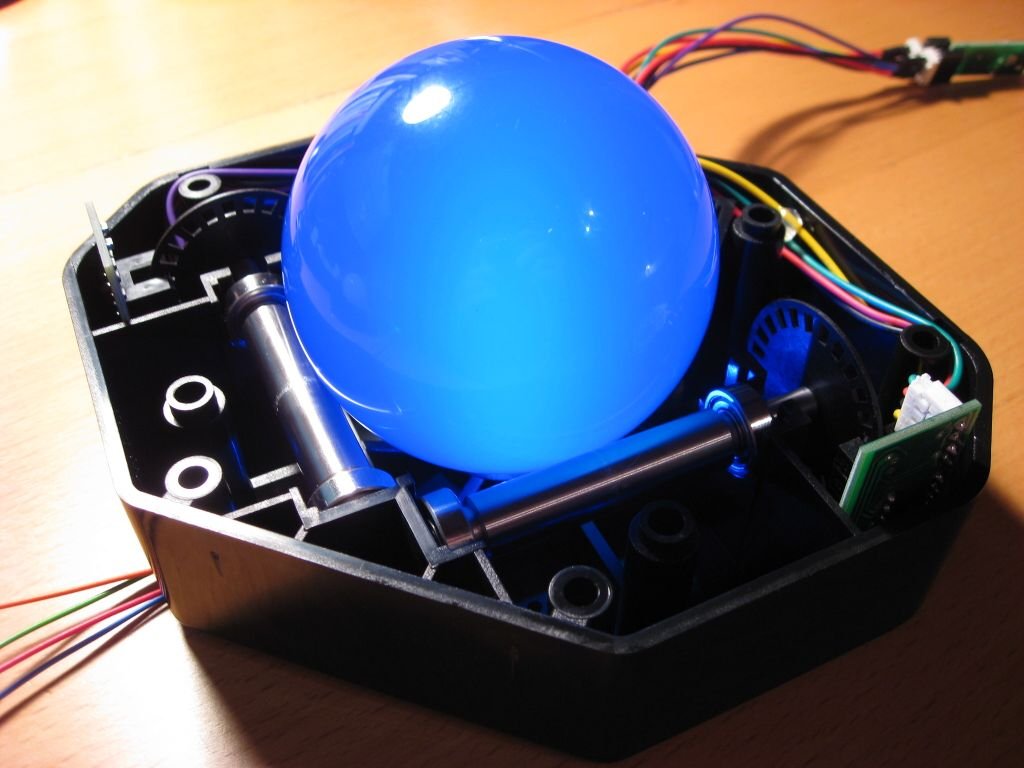
I was really surprised at how poorly the white ball showed the color of the lights under bright lighting conditions (and this was true of all three colors). But the blue ball with the blue light looked great even under bright light.
Here is a video of both balls lit up under dark conditions. You can see that the blue ball only really works with the blue light:
And here is the same under bright conditions:
You can see that the white ball doesn’t do so well under bright light, but the blue ball is fine.
Ok, the next big issue to tackle with the U-Trak is mounting it in your control panel. The big advertised advantage of the U-Trak is its ease of mounting. Just drill a hole and screw it in. Well, there are a number of common circumstances that could make it a bit more complicated than that.
First, the way that it is designed to work is with these four long bolts and expanding inserts that you
hammer [Edit: press] into a pilot hole:
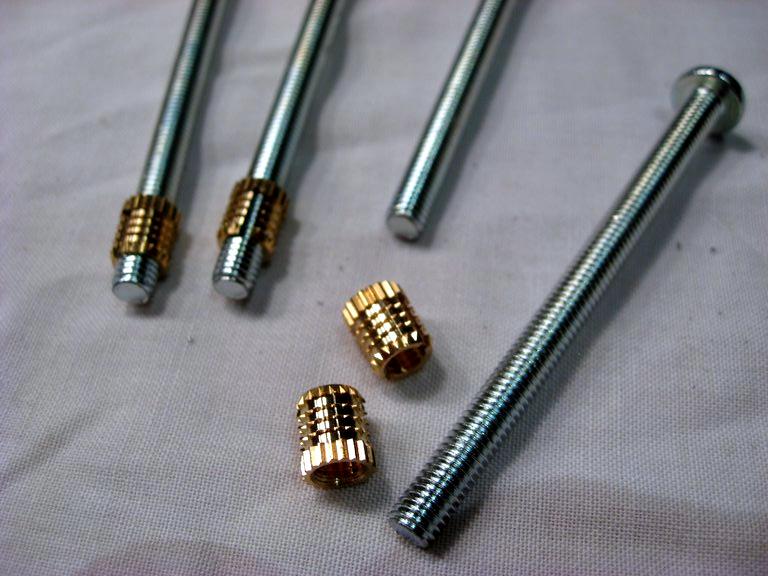
This is how much they stick out the top of the housing once you put them through their holes:

You need to drill four 1/4 inch blind pilot holes to hammer the expanding inserts into. There were some early complaints from people about these “blind” pilot holes, and call for a template so that you wouldn’t have to drill the holes “blind.” Well, that’s not what blind means here. “Blind” refers to holes that do not go all the way through the wood. You don’t need a template because the U-Trak housing is the template. Just place it on the board where you want it to be mounted, and then stick a long pointy thing of your choosing through the holes to mark where the blind pilot holes need to be drilled. I used a screwdriver:
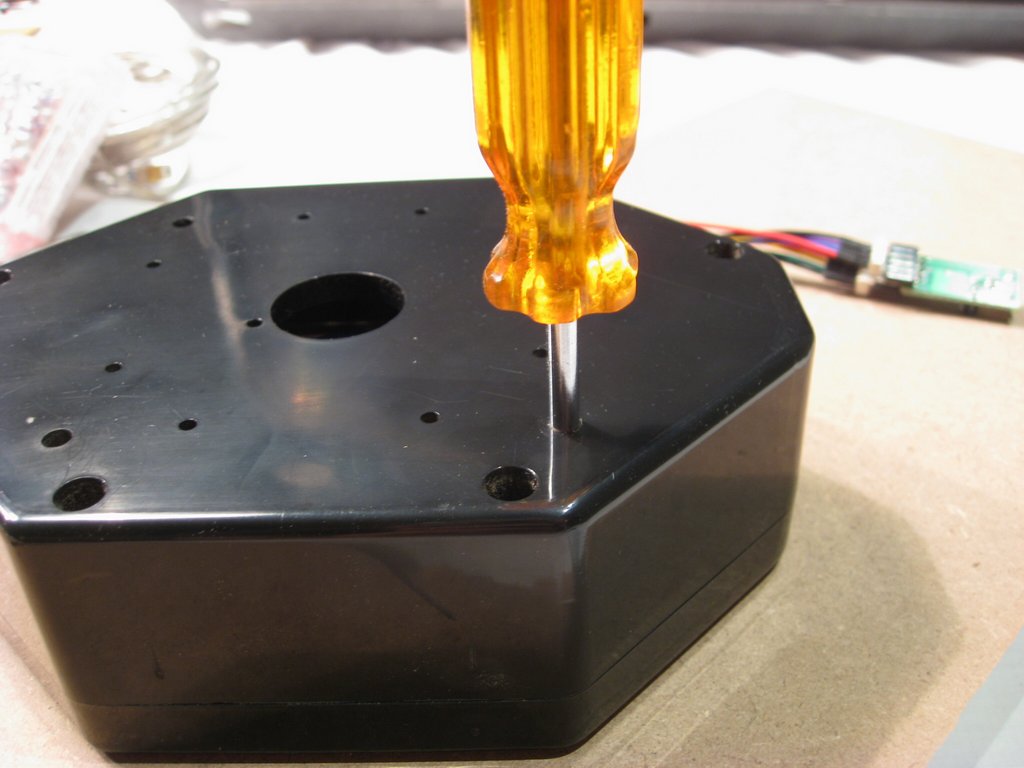
Now the tricky part comes. There are two ways to mount the U-Trak: with a bezel and without a bezel. If you want to mount it without the bezel and have the top of the housing be flush with the top of the control panel, then you’ll have to use 3/4 inch wood. After you drill a 3-1/4 inch hole and mount the U-Trak, it will look like this on the top:
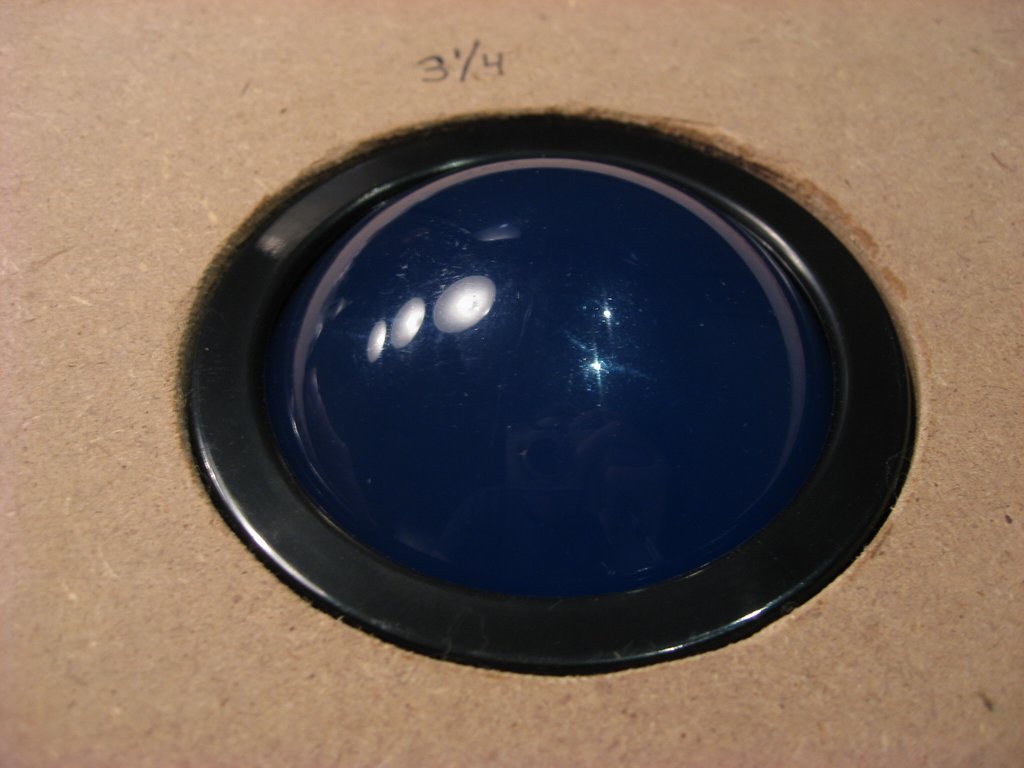
Close up:
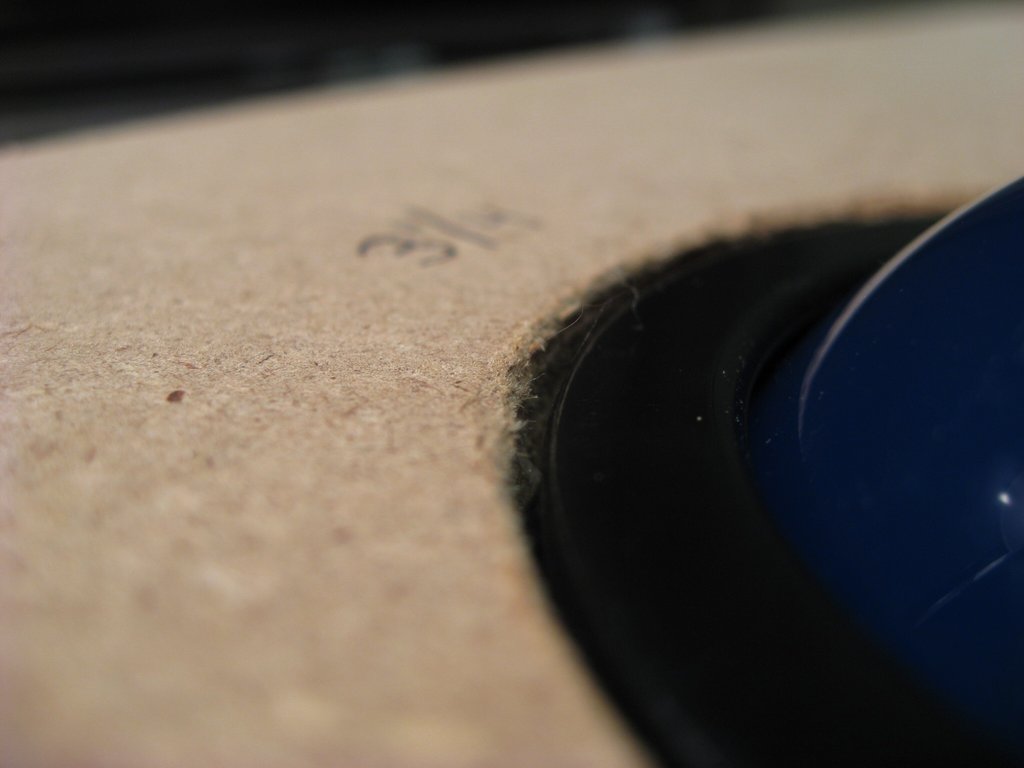
Personally, I don’t think that looks so nice. At least not with the rough hole that I drilled! I think you’d have to have a pretty nice hole edge to pull this look off. BUT, most people have a 1/8 inch piece of Plexiglas on their control panel, which makes the U-Trak sit 1/8 inch below the surface of the plexi. If you want to have the housing flush in that case, just use a 5/8 inch thick control panel top. Otherwise you’ll have to use a router to make a 1/8 inch cutout under your 3/4 inch control panel where the U-Trak will sit, like this (I did this freehand on a test piece of wood, and note the one blind pilot hole):
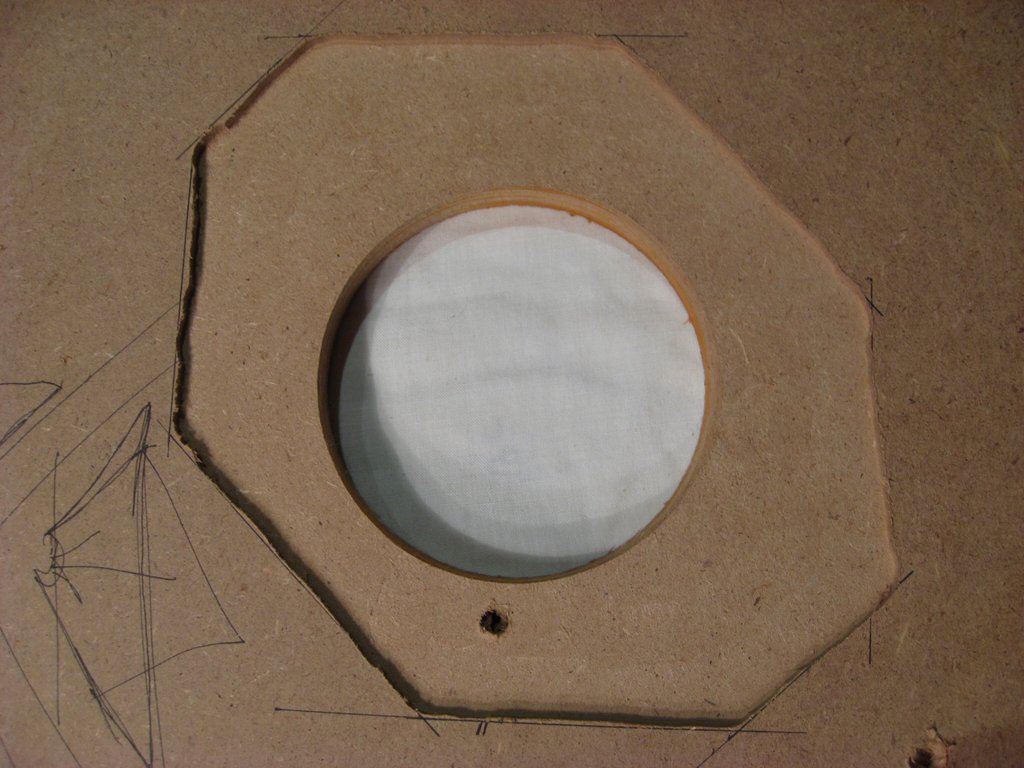
Then, the U-Trak will look like this from the top, perfect for the plexi:
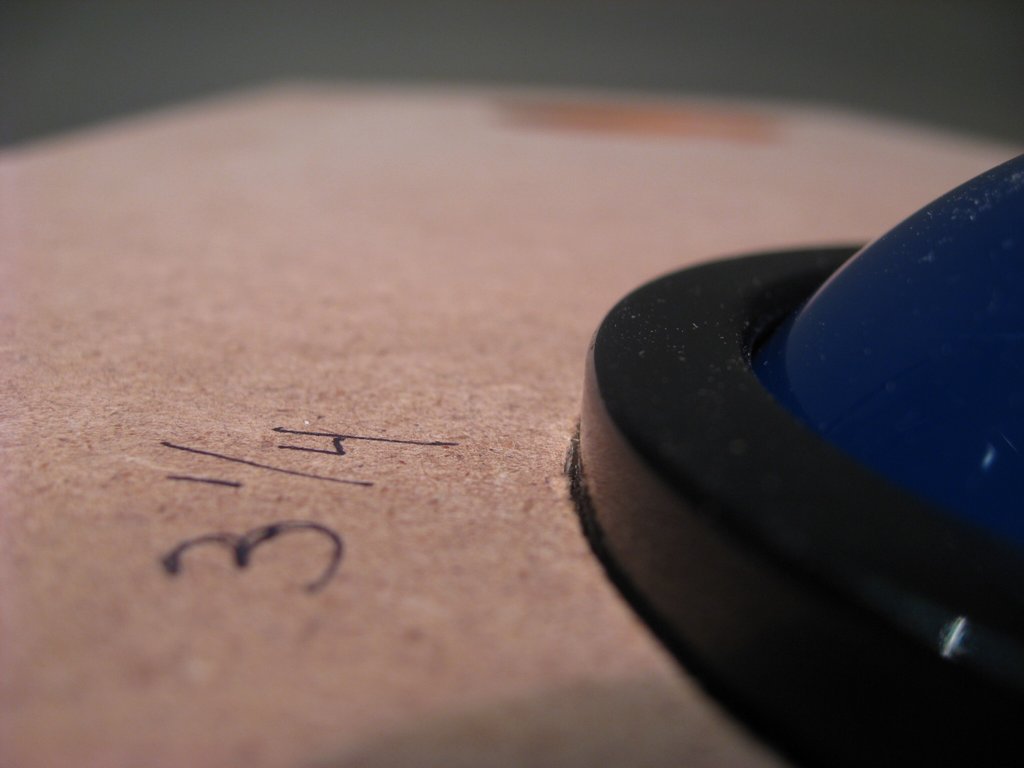
To mount the U-Trak with the optional bezel, which I think gives a much cleaner look, you drill a 3-3/8 inch or 3-1/2 inch hole, which leaves room for the bezel, as so:
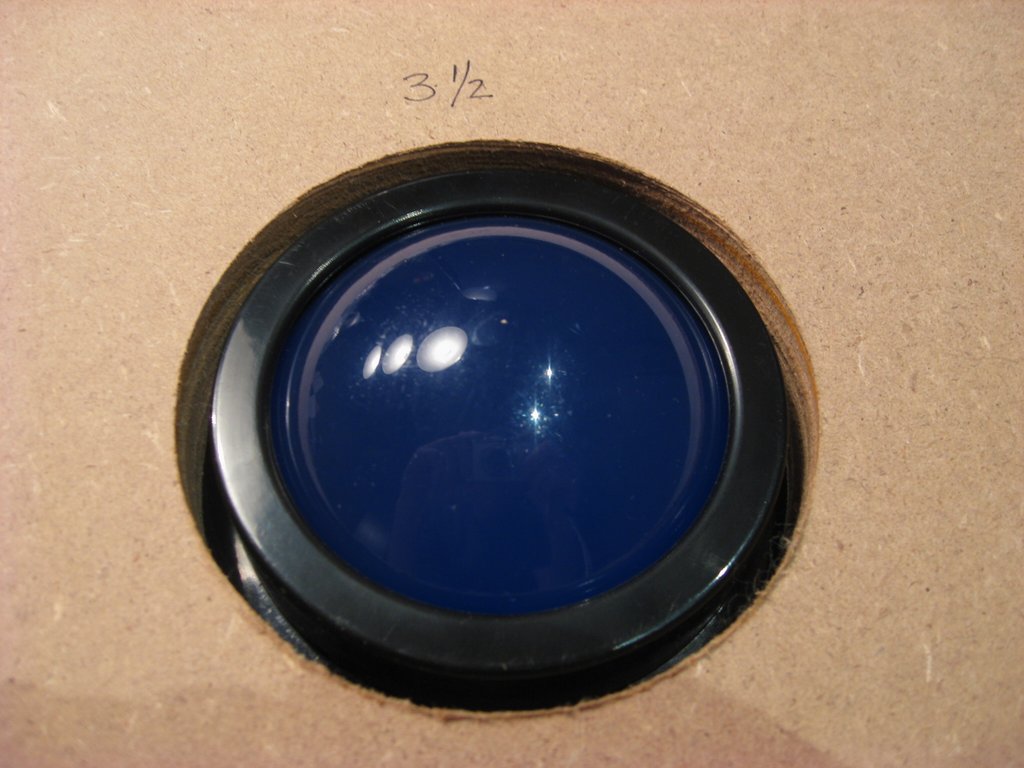
Ultimarc states: “The optimum panel thickness for this method [mounting with the bezel] is 5/8 in (17mm). A 3/4 inch panel can be used but the flange will sit 1/8 inch above the ball surround.” In other words, this is what it will look like if you mount the U-Trak in a 3/4 inch panel with the Bezel:
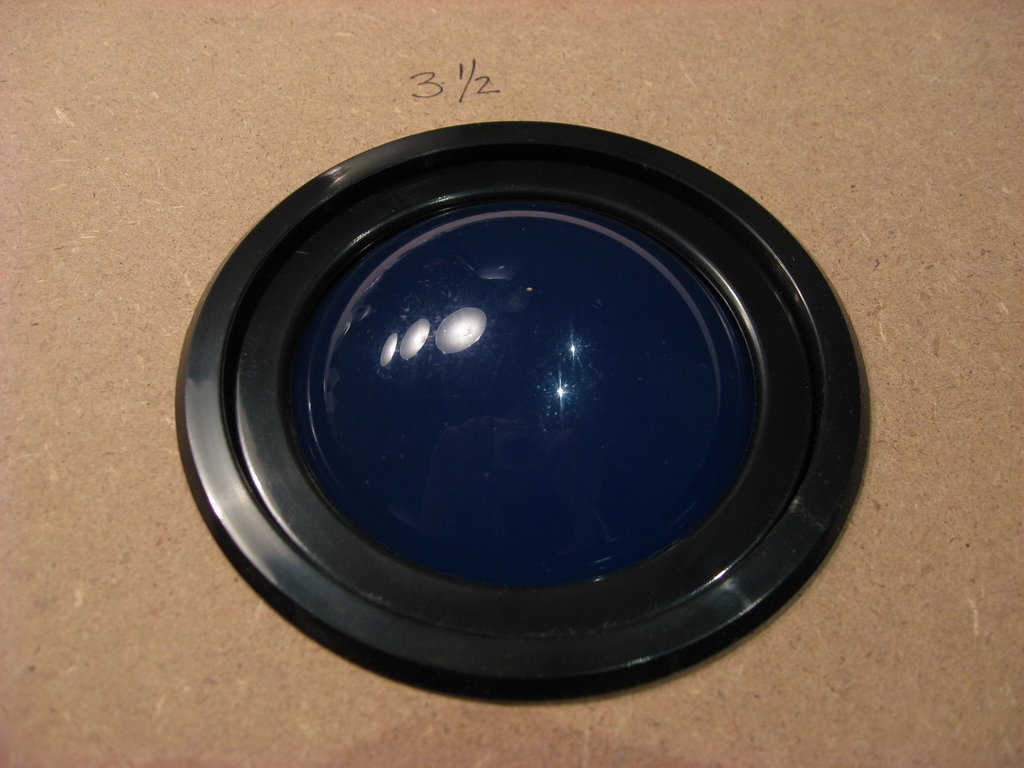
Close up:
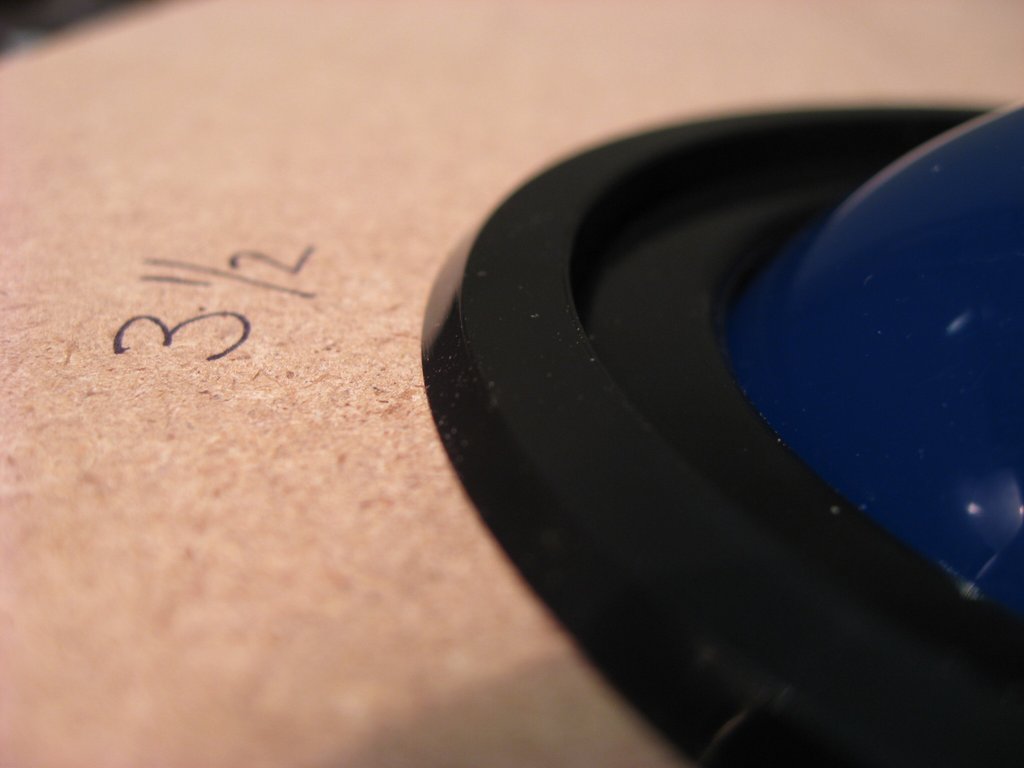
However, in this configuration, the bezel will not fit tight around the U-Trak housing, as this video demonstrates:
If you opt for that configuration, you’ll have to glue the bevel down with some hot glue. Also, if you have a Plexiglas top, then that will make the panel 7/8 inch thick and you’ll be even worse off. So you’d have to use a router on the bottom of your panel just to make it act like it’s 3/4 inch. (If you’re going to do that, you might as well take off a 1/4 inch and make the panel + plexi act like it’s 5/8 inch. See below.)
So, to get a nice flush look with the bezel, you’ll have to use a 5/8 inch thick control panel. Then the U-Trak will sit 1/8 inch above the panel (which is the thickness of the bezel), like so:
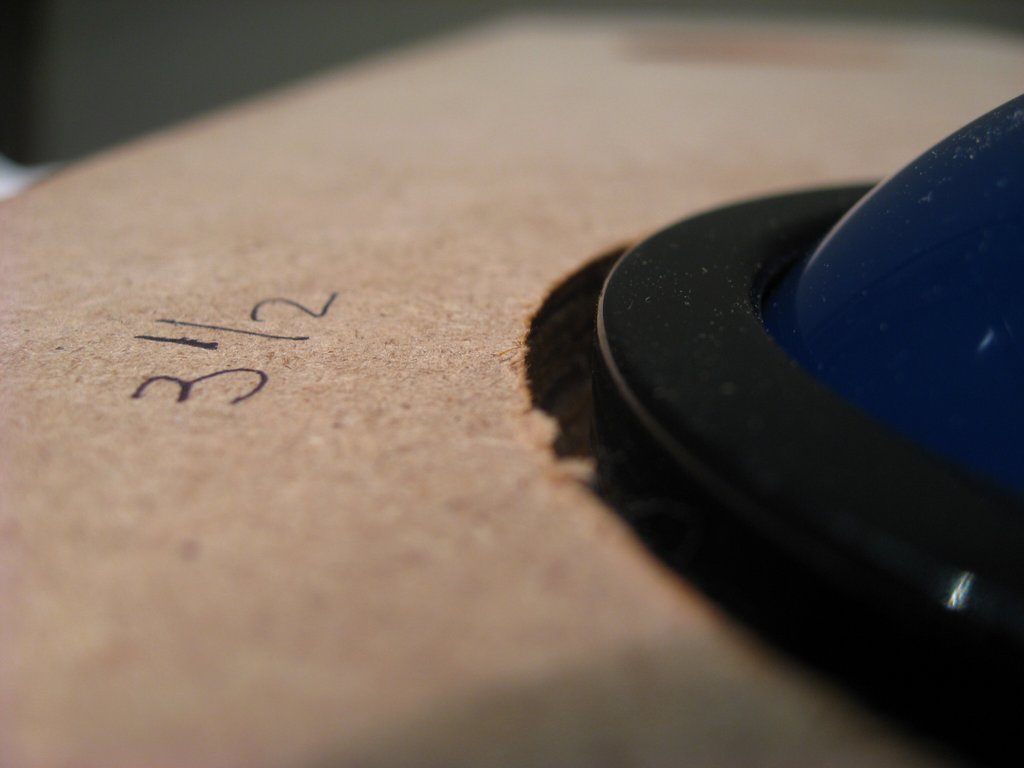
Now the bezel will fit perfectly, and you’ll achieve this nice clean look (well, after you clean off the MDF dust):
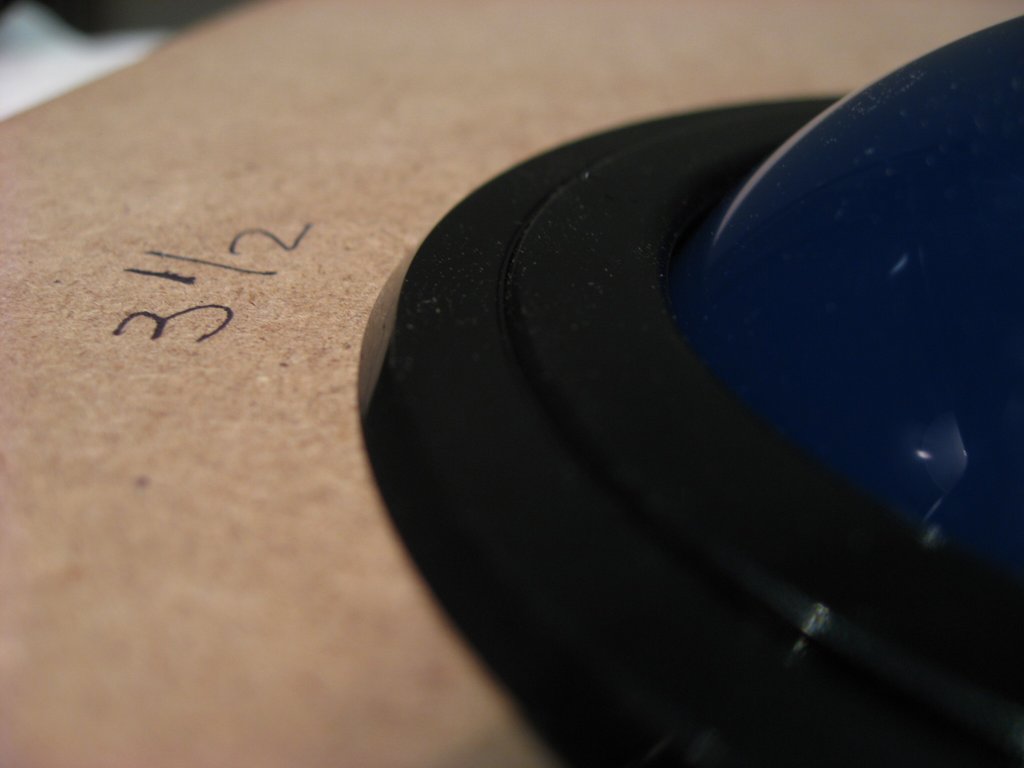
And, your bezel will fit nice and tight, like so:
BUT WAIT! What about my Plexiglas!?! That will put the bezel 1/8 inch higher, and it will be as if I had a 3/4 inch panel, with a loose bezel that needs to be glued! So, with the very common situation of a 5/8 inch panel + plexi, you’ll have to use a router to get the panel to act like it’s 5/8 inch.
Finally, the U-Trak’s in-game performance is great. But it’s a trackball, and it doesn’t seem that hard to get a trackball to act like it’s supposed to. Granted, I’m not able to compare the U-Trak to other trackballs, but it seems like the sort of thing that either works fine or doesn’t work at all, and the U-trak works fine.
In conclusion:
PROS:
- USB 2.0 makes installing U-Track in windows a 10 second proposition. No special drivers needed. Truly plug-and-play.
- Works great.
- Clean design.
- Clever under-panel mounting system makes for an elegant looking panel with no exposed bolts.
- Relatively easy to mount (but see caveats below).
- Looks really cool when lit up. (The Happ translucent blue ball with blue lighting is amazing.)
CONS:
- Usual documentation problems. (Where do I plug this thing in?)
- No translucent blue ball option at time of purchase (must be purchased from Happ separately).
- Lighting module mounting solution inadequate.
- Some common panel scenarios still require using a router to achieve totally flush look (e.g., 5/8” + plexi).
Conclusion: Recommended!
You can read more about the U-Trak at Ultimarc’s web site:
Ultimarc U-TrakPublic service announcement:
Protect your loved ones from the evils of MDF dust.
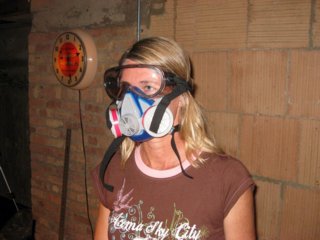
Edit: fixed typo




 Home
Home Help
Help Search
Search Login
Login Register
Register
 Send this topic
Send this topic Print
Print



